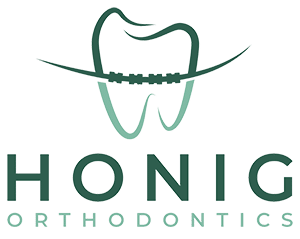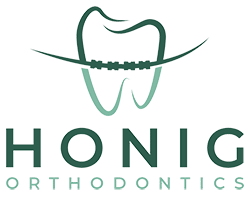Overbite Correction Made Simple: A Helpful Guide

What is an overbite?
An overbite (sometimes called a “deep bite”) happens when the upper front teeth overlap the lower front teeth more than they should. A small overlap is normal. Too much overlap can lead to uneven tooth wear, jaw stress, and bite problems.
Why fix an overbite?
Correcting an overbite is about more than looks. Benefits can include:
- Healthier teeth: Less enamel wear and chipping.
- Improved bite function: Easier chewing and clearer speech.
- Jaw comfort: Reduced strain on jaw joints and muscles.
- Hygiene boost: Straighter teeth are easier to clean.
What causes an overbite?
Overbites can be due to:
- Genetics: Jaw size and tooth position you’re born with.
- Habits: Thumb sucking, pacifier use, or tongue thrusting in childhood.
- Tooth position: Crowding, spacing, or missing teeth that shift the bite.
Overbite correction options
Your orthodontist will create a plan based on your age, bite, and goals. Common treatments include:
1) Braces (metal or ceramic)
Braces use brackets and wires to move teeth and guide the bite into a healthier position. Many overbites respond well to braces, sometimes with elastics (rubber bands) to fine-tune how the upper and lower teeth meet.
2) Clear aligners
Custom trays (worn most of the day) can straighten teeth and help correct mild to moderate overbites. Small tooth-colored attachments and elastics may be used to improve bite control.
3) Growth-guidance appliances (for kids and teens)
For growing patients, expanders or bite-correcting devices can guide jaw growth. Early care can make later treatment shorter and simpler.
4) Extractions (select cases)
When there’s severe crowding or a big tooth-jaw size mismatch, carefully planned extractions can create space to align teeth and correct the bite.
5) Surgical orthodontics (adults with severe jaw imbalance)
If the upper and lower jaws don’t match in size or position, a combination of orthodontics and jaw surgery may be the most stable solution. Your orthodontist will explain when this path is recommended.
What to expect during treatment
- Consultation & exam: Your visit includes photos, digital scans or impressions, and X-rays to measure your overbite and check tooth and jaw health.
- Personalized plan: You’ll review options, braces, aligners, elastics, or appliances and a timeline.
- Active correction: Regular check-ins help guide tooth movement and adjust mechanics.
- Finishing & detailing: Small refinements deliver a precise bite and a polished smile.
- Retainers: After overbite correction, retainers keep your results stable.
How long does the treatment take?
Every case is different. Mild cases may take 6–12 months. Moderate to complex cases often take 12–24 months. If jaw surgery is needed, timing may be longer. Wearing elastics as instructed and keeping appointments on schedule can speed progress.
Will it hurt?
You may feel pressure or tenderness for a few days after starting braces or aligners and after adjustments. This is a sign that teeth are moving. Over-the-counter pain relief and soft foods usually help.
Your next step
If you’re ready to explore overbite correction, the caring team at Honig Orthodontics in Newark and Middletown, DE can help you choose the right path for your smile and lifestyle. Book a consultation to get started.

